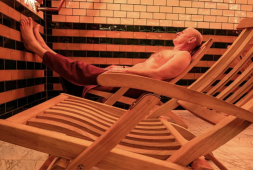Biotech Company First To Produce A Bio-3D-Printed Windpipe Given To Woman In Successful Surgery

A biotech company has achieved a remarkable milestone in prosthetics by becoming the first and only firm in the world to produce a bio-3D-printed windpipe that was successfully transplanted into a human body.
This groundbreaking procedure marks a significant advancement in the field of regenerative medicine. The process involved obtaining nasal stem cells and cartilage cells from other patients who had undergone various procedures.
These cells were then replicated and combined with polycaprolactone (PCL) for structural support, along with a special ink made from living cells to create the windpipe, or trachea.
The transplant surgery took place at St. Mary’s Hospital in Seoul, where a woman in her 50s, who had lost part of her trachea during thyroid removal surgery, received the artificial trachea. The innovative 3D printer used in the procedure, developed after over a decade of research and testing, was provided by the company T&R Biofab.
Both the hospital and T&R Biofab anticipate that the artificial trachea will enable the patient to lead a relatively normal life until its projected expiration date five years from now. The hypothesis is that by that time, her body will have regenerated her own trachea.
According to reports from the BBC, the patient did not require any immunosuppressants, medications typically used to prevent the body from rejecting the new organ. Furthermore, six months post-operation, the transplanted windpipe is not only healing well but also showing signs of new blood vessel formation.
Precise dimensions were crucial for the success of the trachea transplant. MRI and CT scans were conducted to ensure a perfect fit.
T&R Biofab developed the printer to specialize in printing hollow tubular structure with high precision. According to the BBC, the earliest work on this technology dates back to 2004, when efforts began to devise this groundbreaking machine. The company emphasizes that the printer had to function seamlessly with the servers of St. Mary’s Hospital, making it incompatible with other hospitals.
Dr. Paulo Marinho, head of scientific strategy at T&R Biofab, told BBC Science Focus, “While it’s too soon to say that 3D-bioprinting could be the solution for the current shortage of organs for transplantation, it definitely increases the hopes to partially solve the issue for some organs or some specific indications, or at least fill the gap between classic medical devices and organ transplants.”
Tracheotomies are typically performed in cases of trauma to the windpipe, thyroid cancer, or congenital anomalies. However, this particular case represents a pioneering approach to addressing such medical conditions by using bio-3D-printed prosthetics.



